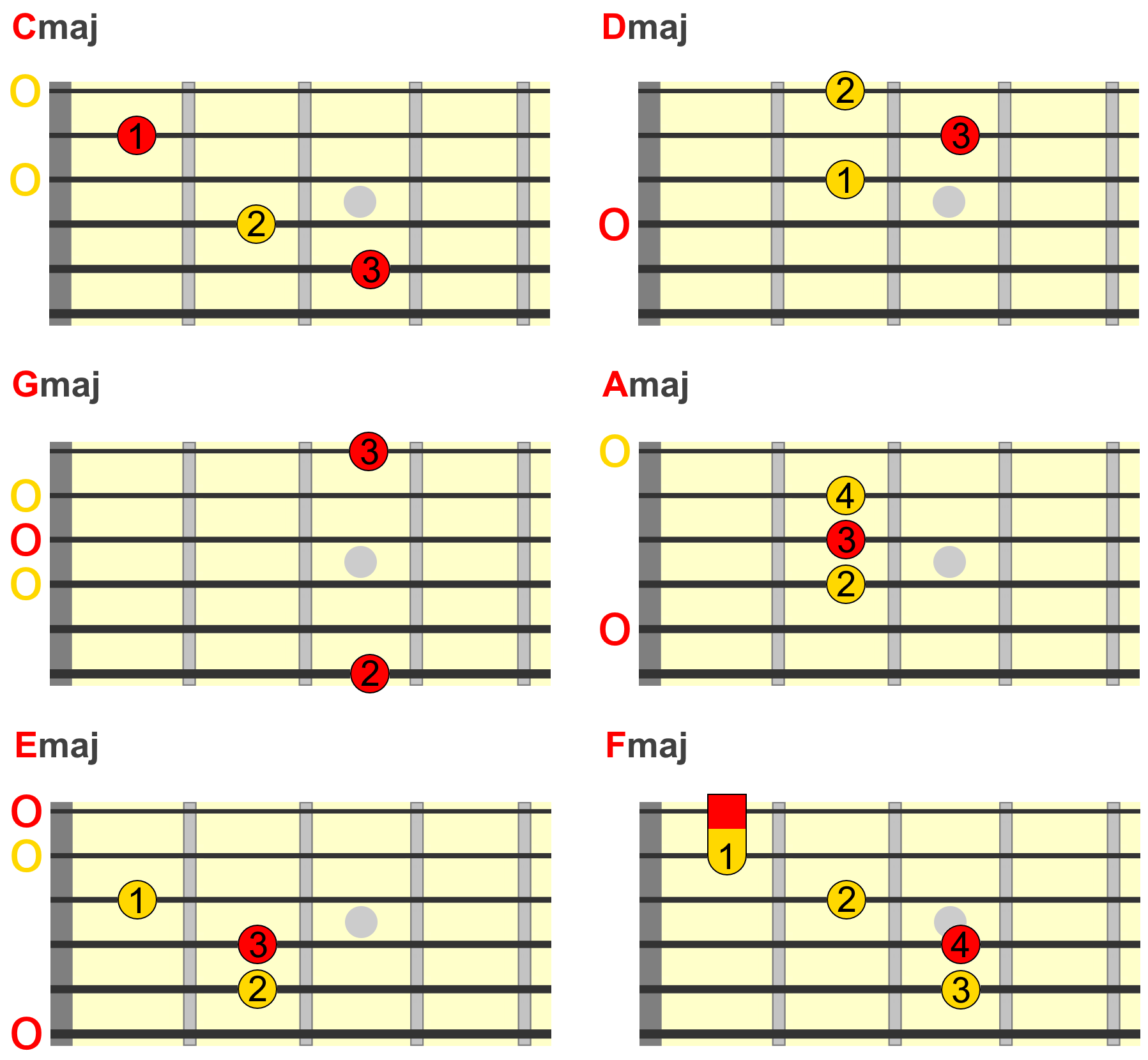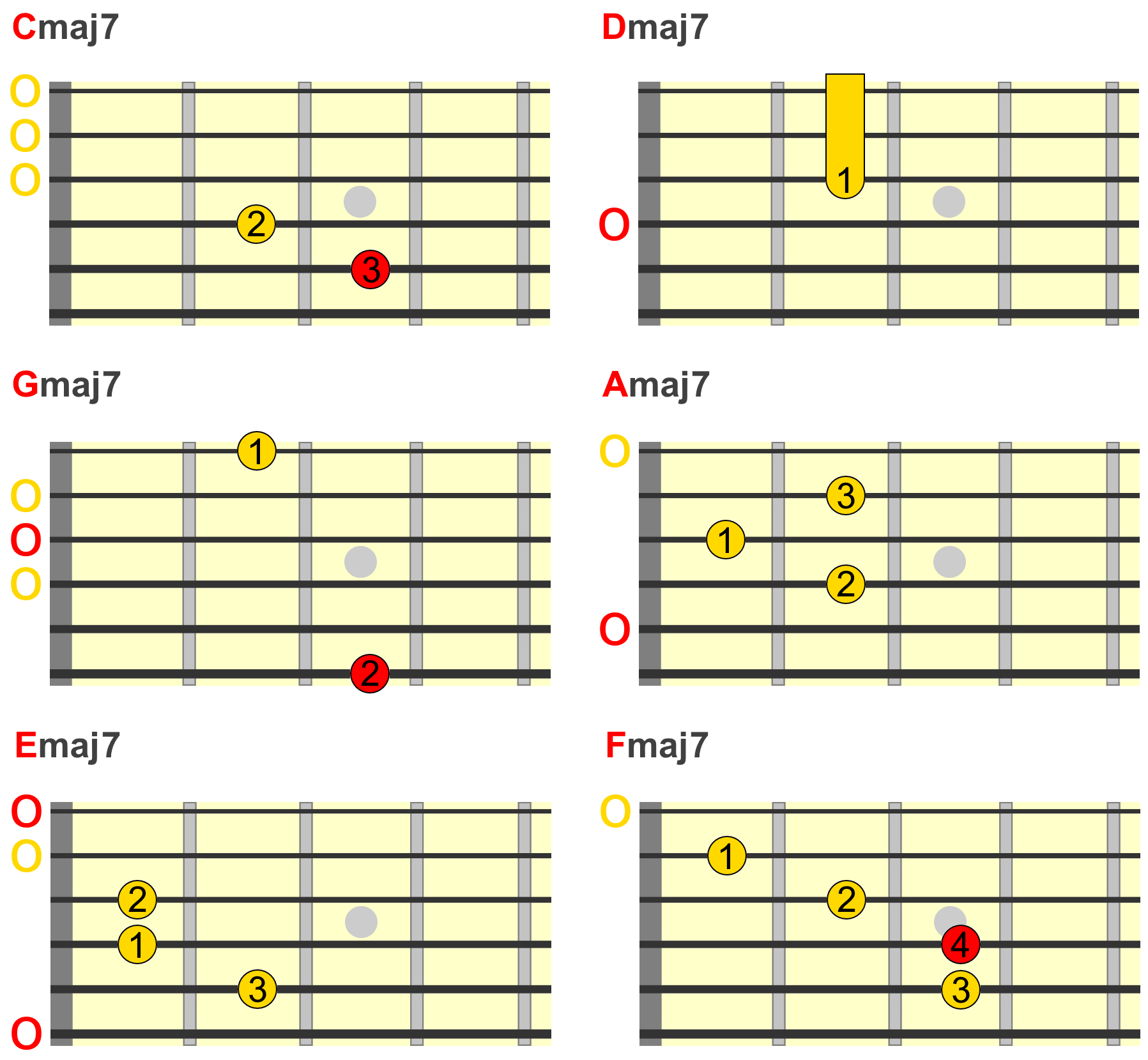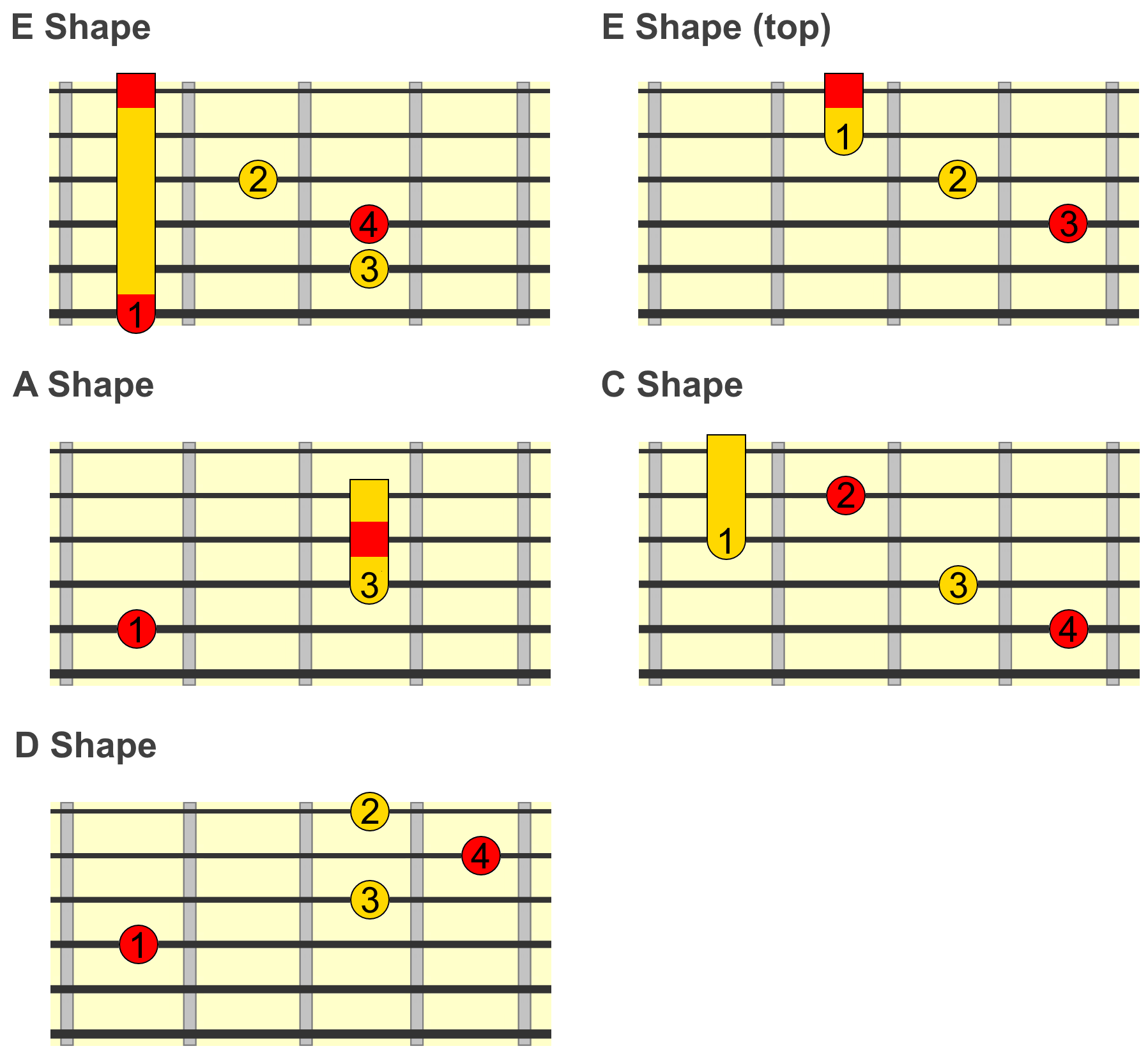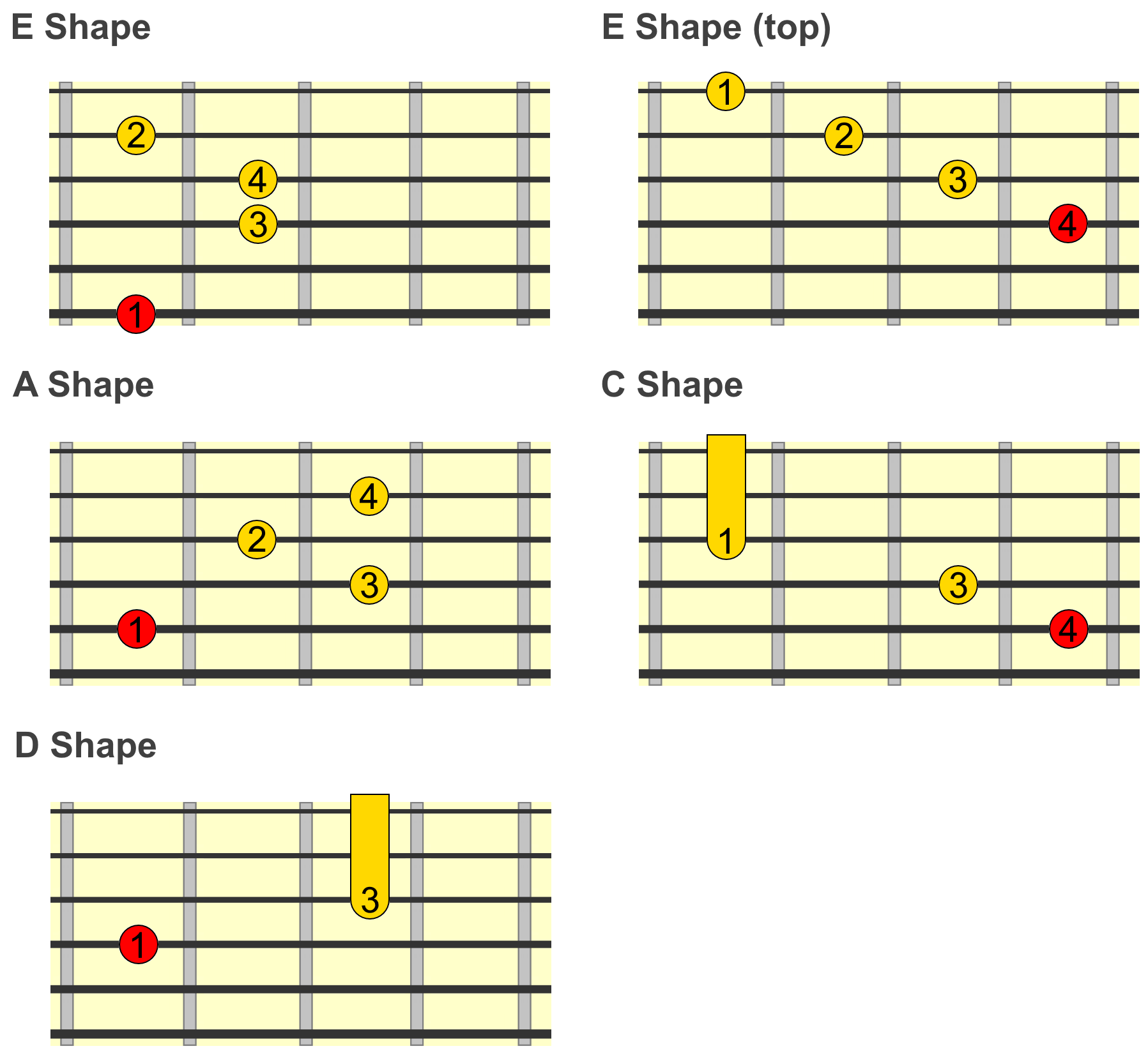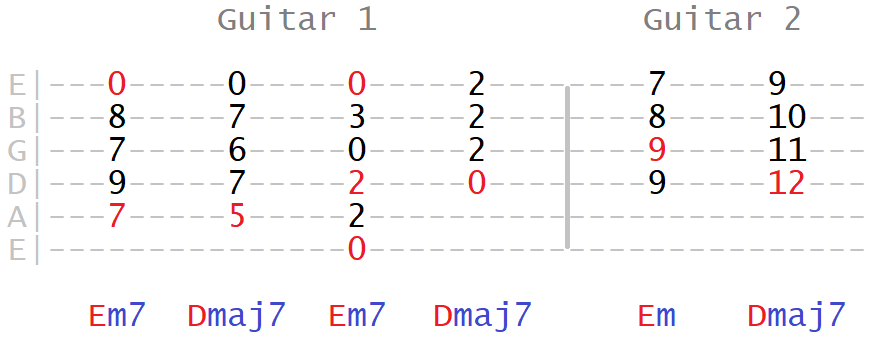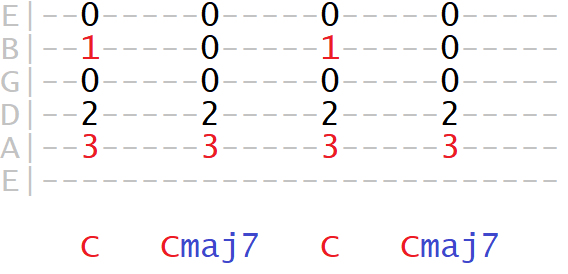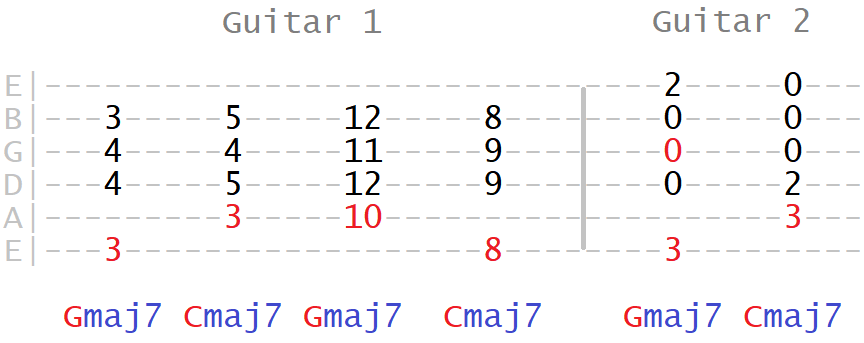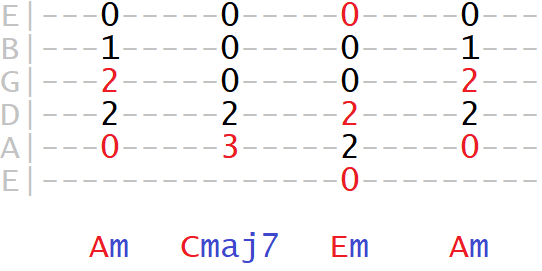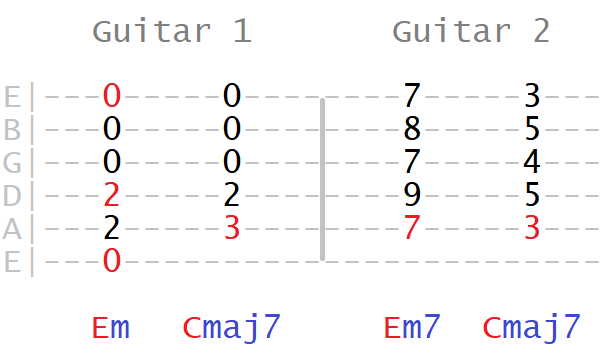Basic Major 7th Theory
The "major 7th" refers to an interval that is added to the basic major triad. When we add the major 7th to a major triad, our three-tone triad (1 3 5) becomes a richer four-tone chord (1 3 5 7).
In the clip below, you can hear a C major triad (C, E, G) shortly followed by Cmaj7, adding the major 7th interval (B)...
However, a more practical way to think of the major 7th interval is lying one semitone or fret down from the root of the chord (e.g. in Cmaj7, B is the major 7th).
The major 7th will typically replace a higher root in the chord (e.g. the octave). For example, take this basic major triad shape (left) and see how we move the root octave down one fret to voice the major 7th (right), giving us a maj7 chord...
Major 7th Chord Shapes
As there's only one note responsible for turning a regular major chord (or major triad) into a maj7 chord, we only have to slightly alter our major shapes to get maj7.
Below I show you the standard major chords vs their maj7 variations. Use this to train your eyes and ears to the difference, playing one after the other on the same root (e.g. Dmaj followed by Dmaj7)...
Open Position Shapes
The red dots (including open O) mark the root positions in the chord shape.
Movable Shapes
Position the root at the appropriate fret for the chord you want...
Using Major 7th Chords In Progressions
Maj7 chords occur naturally in both major and minor key progressions. In a coming part, we'll look at more inventive, "outside" ways to use these chords in progressions. But for now, let's focus on their most common applications.
The below table shows you the natural 7th chords of common major and minor keys (from harmonising the major and minor scales). You can see on which degrees maj7 chords are naturally built...
This means if you're writing or accompanying a song, you can use maj7 chords (whichever shape you choose) on these positions to add more depth and colour.
Major Key Tonic
Typically, the tonic (I) major chord of the key will be a maj7 chord. For example, in the key of D major, Dmaj might be played as Dmaj7...
You might also hear the tonic move between basic triad and maj7 (or vice versa)...
Major Key IV Chord
The 4 (IV) chord, also called the subdominant, is typically played as a maj7 chord. For example, in a G major key, Cmaj7 would be our natural IV chord...
Minor Key III Chord
In the key of A minor, Cmaj7 would typically be played as the 3 (III) chord...
Minor Key VI Chord
In the key of E minor, Cmaj7 would typically be played as the 6 (VI) chord...
Let Your Ears Be The Judge!
We can of course use major 7th chords anywhere they sound good. And that's really the bottom line when it comes to choosing our chord types.
However, in the next part, we'll look at some specific ideas for using maj7 in progressions. Plus, how to extend maj7 chords to add even more colour.


